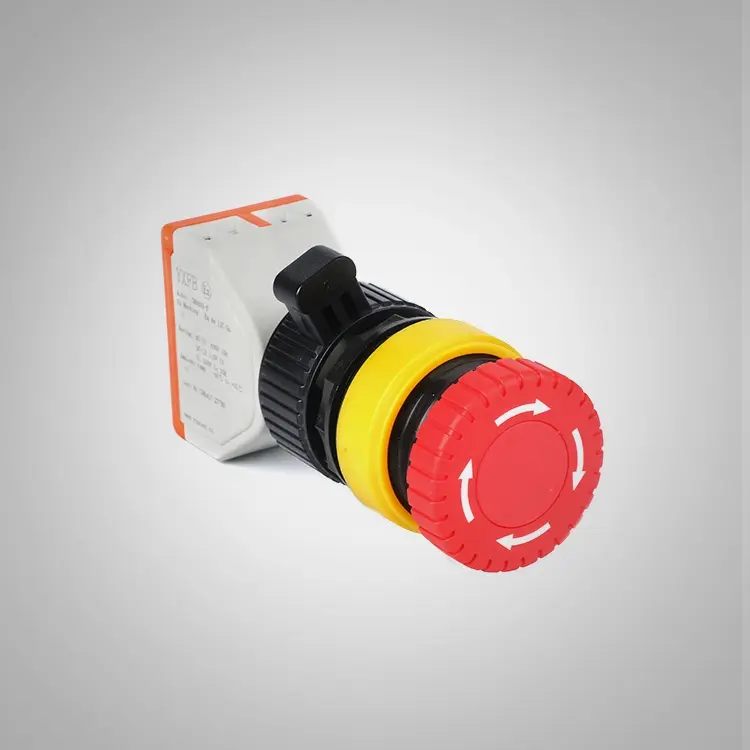Which Explosion Proof Button Options Solve Real Plant Problems Today?
2025-11-05
When first selecting control hardware for hazardous areas, I quickly realised that not all pushbuttons are created equal. In refineries, chemical pipelines and grain terminal facilities, the details determine equipment uptime.That is why I rely on YXFB when I need an Explosion Proof Button that does the job without drama. We design and manufacture in the electrical capital of China, and we ship Ex de IIC T6 increased-safety push buttons worldwide. If you are choosing between a start stop set, a double push, or an emergency stop, the questions below map cleanly to the decisions you need to make on site.
How do I match certification and gas group without overpaying?
I start by checking the hazardous area classification on the permit. If I see Zone 1 or Zone 2, and gas group IIC, I shortlist Ex de IIC T6 buttons. That keeps me aligned with typical ATEX and IEC 60079 practice while avoiding overspec. When the job sits in North America, I verify NEC 500 class and division, then align the marking. Paying for the wrong mark helps nobody. Paying for a sticker without the testing hurts later.
Key checks I make on every submittal:
-
Marking must show Ex de IIC with T6 or the actual required temperature class
-
IP66 or higher when washdown or dust storms appear on the risk register
-
Ambient range that matches the site, not only a lab number
-
Contact block ratings that match the motor starter coil or PLC input
Which button materials last in salt spray and solvent vapors?
I look at the enclosure and the operator head as two different stories. Marine terminals destroy cheap plated metals. Solvent lines attack some plastics. Here is how I pick:
-
316 stainless for coastal air, brine, and chlorine exposure
-
Hard anodized aluminum when weight matters on mobile skids
-
High-impact thermoplastic with UV stabilizers for sun-baked outdoor kiosks
-
NBR or FKM seals for oil and hydrocarbon mists
What type of operator head improves safety with gloved hands?
Gloves change everything. I choose large mushroom heads for emergency stop and illuminated flat heads for normal actuation. Positive tactile feedback matters in noise. So does color coding that workers can see through smoke or dust.
-
Red mushroom head for E-stop with twist release
-
Green for start, black for stop where standards allow
-
Illuminated rings for low-light cable trays
-
Guarded heads where bumping is likely
How do I keep wiring simple while staying compliant?
I design for fast terminations and short troubleshooting time. That means enough space behind the operator and contact blocks that snap in and stay in.
-
Cage-clamp or spring terminals reduce loose strands in cramped boxes
-
Prewired start stop pairs reduce errors on night shifts
-
Nameplates engraved with circuit tags speed lockout and testing
-
Separate earth stud keeps inspectors calm and continuity solid
Which Explosion Proof Button model should I use for each zone?
| Use case | Typical zone | Recommended type | Contact options | Ingress rating | Temp class |
|---|---|---|---|---|---|
| Motor start on skid | Zone 1 | Ex de IIC increased safety push button | 1 NO 1 NC | IP66 or higher | T6 |
| Local stop near pump | Zone 1 | Ex de IIC push button black head | 2 NC | IP66 or higher | T6 |
| Start and stop on panel | Zone 1 or 2 | Explosion-proof start and stop buttons set | 1 NO 1 NC per head | IP66 or higher | T6 |
| Dual confirm action | Zone 2 | Explosion-proof double push buttons | 2 NO or mixed | IP66 or higher | T6 |
| Emergency shutdown | Zone 1 | Explosion proof emergency stop button mushroom head | 2 NC failsafe | IP66 or higher | T6 |
I add illumination when operators need at-a-glance state confirmation in dim spaces.
Why do Ex de IIC T6 increased safety buttons fit most mixed-risk plants?
In many brownfield sites I see gas groups ranging from propane to hydrogen. Ex de IIC coverage gives headroom across those gases. T6 limits surface temperature, which helps when unknowns exist. Increased safety construction avoids ignition sources inside the operator by design and pairs well with flameproof enclosures around it.
How do I avoid nuisance trips from vibration and shock?
I place operators on rigid surfaces and I specify anti-vibration contact blocks. Where structure-borne vibration exists, I use locking rings, threadlocker approved for hazardous areas, and support conduit within the first 300 mm to prevent lever action on the back of the operator.
What maintenance plan keeps buttons reliable without shutting lines?
I schedule quick checks during routine rounds. A five-minute audit prevents a five-hour outage.
-
Inspect lens clarity and seal condition during weekly rounds
-
Cycle each operator once during permit changes to confirm travel and feel
-
Wipe dust with antistatic cloths in grain or pharmaceutical rooms
-
Log any soft travel or sluggish return and replace the spring kit before failure
-
Keep a small spares kit with the exact contact block codes used on site
How do I integrate buttons with SIL or interlock logic?
I match the mechanical function to the logic function. For an E-stop, I always go with dual NC contacts wired in series to a safety relay. For start stop, I drive a control relay coil through an interlock, with the PLC watching the feedback. When the plant uses safety PLCs, I provide separate dry contacts and avoid shared commons to keep diagnostics clean.
What mistakes do I still see and how do I dodge them?
I still walk into panels with the wrong temperature class or mismatched thread forms. I also see operators installed too low for ergonomics. The fixes are simple if I plan early.
-
Verify thread type and pitch before threading into the enclosure
-
Keep centerline between 900 and 1200 mm for frequent use
-
Use breather drains where humidity cycles cause condensation
-
Label each operator with function and loop ID so maintenance is painless
How do I choose between single push, start stop, double push, and emergency stop?
I decide based on task criticality, frequency, and the need for sequence control.
-
Single push works for a single action like jog
-
Start stop pair works for local hand control of a motor
-
Double push helps with two-hand confirm in guarding situations
-
Emergency stop mushroom is mandatory wherever entanglement is possible
What value do I get from a manufacturer that actually builds these parts?
I want short lead times, stable part numbers, and consistent torque values that match the datasheet every time. That is why I work with YXFB. We are an explosion proof button manufacturer based in the electrical capital of China. As a professional brand in explosion-proof control buttons, we offer Ex de IIC T6 increased-safety models across the range, including explosion proof push buttons, explosion-proof start and stop buttons, explosion-proof double push buttons, and explosion proof emergency stop buttons. That breadth means I can standardize across lines and still meet site-specific needs.
What specification checklist do I use before I place the order?
-
Area classification, gas group, and temperature class confirmed
-
Ingress rating and UV stability matched to environment
-
Material choice aligned to corrosion risk and weight limits
-
Contact configuration mapped to the control diagram
-
Illumination voltage matched to control power
-
Thread form and size matched to the panel or enclosure
-
Nameplate text approved by operations
-
Spares list created with exact codes for contact blocks and seals
How can I turn these choices into a standard across multiple sites?
I build a small library of typicals. One drawing for a motor start stop station, another for an E-stop pull box, and one for a dual-confirm application. Then I lock the vendor and part codes. This shrinks engineering time on repeat projects and keeps maintenance crews familiar with the hardware.
Where can I get help finalizing a bill of materials for my project?
If you are weighing options or need a quick review of a hazardous-area panel, I can help map your loads, zones, and operator count into a clean bill of materials. Share the zone map, motor list, and any special cleaning or washdown notes. I will return a shortlist that fits your standards and your budget.
Would you like a fast quote or a sample to test on your line?
Tell me about your site and I will match a button set that fits your zone, gas group, and workflow. Contact us for drawings, data sheets, and pricing, or send your RFQ with quantities and delivery point. If you prefer a hands-on check, ask for a sample and run it through your own inspection. I am ready to help you pick the right Explosion Proof Button and keep your plant running cleanly and safely.



